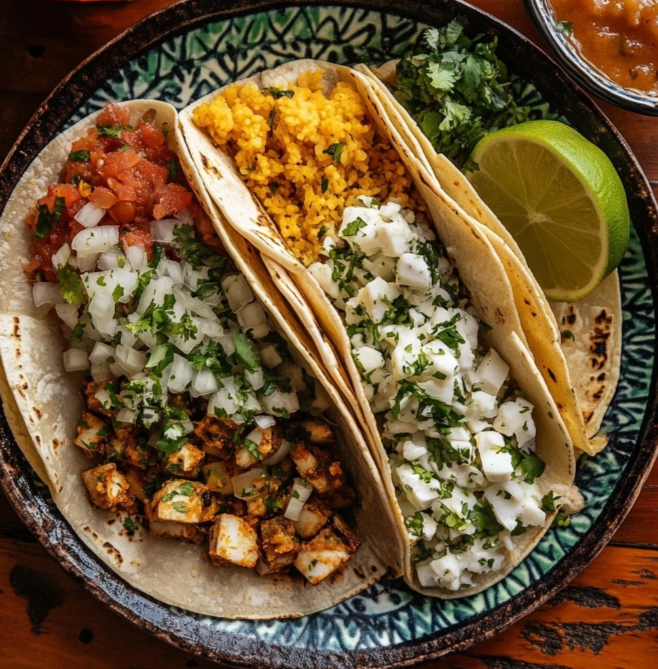Traditional Mexican foods are an essential part of the country’s identity, representing its vibrant history and cultural diversity. The cuisine combines indigenous ingredients like maize and chilies with Spanish influences such as dairy and pork. As a result, Mexican dishes are much more than meals; they are celebrations of heritage and tradition. In this article, we will explore the history, essential ingredients, and regional specialties of authentic Mexican cuisine.
A Rich History of Traditional Mexican Foods
Pre-Hispanic Foundations of Mexican Cuisine
The origins of traditional Mexican foods date back thousands of years, rooted in the diets of indigenous civilizations such as the Aztecs and Mayans. Staples like maize, beans, squash, and chili peppers formed the backbone of their culinary traditions. These ingredients were not just sustenance; they also played a significant role in religious ceremonies and cultural practices. For instance, tortillas and tamales, both made from maize, were staples of these early diets.
Over time, cooking methods evolved, with techniques like roasting on clay griddles and steaming in banana leaves shaping the cuisine. Consequently, these ancient practices laid the groundwork for many of the dishes still enjoyed today.
Spanish Influence on Traditional Mexican Foods
When the Spanish arrived in the 16th century, they introduced new ingredients such as wheat, pork, beef, and dairy products. This fusion of indigenous and Spanish flavors created iconic dishes like mole poblano and enchiladas, which remain hallmarks of Mexican cuisine. Furthermore, the blending of these two culinary traditions symbolizes the rich history of cultural exchange.
For a deeper understanding of this fusion, check out the UNESCO recognition of Mexican cuisine as an Intangible Cultural Heritage.
Mexican food has since evolved into a diverse culinary tradition that continues to gain global recognition.
Core Ingredients in Traditional Mexican Foods
Maize: The Lifeblood of Mexican Cuisine
Maize, often referred to as the “heart” of Mexican food, is the foundation of countless dishes. For example:
- Tortillas: Used in tacos, enchiladas, and tostadas, they are a versatile staple.
- Tamales: Masa dough filled with meat, cheese, or sweet fillings, wrapped in corn husks, and steamed.
- Atole: A warm, masa-based beverage flavored with cinnamon or chocolate.
Beans and Rice
Beans and rice are essential components of authentic Mexican cuisine. Black and pinto beans, often refried or stewed, are commonly served alongside meals. Meanwhile, arroz rojo, or red rice, is a flavorful side dish cooked with tomatoes and spices.
Chilies and Spices
Chilies, ranging from mild poblanos to fiery habaneros, are indispensable in Mexican cooking. Combined with spices like cumin, coriander, and oregano, they create the depth and complexity found in dishes like mole and salsa verde. Additionally, these ingredients contribute to the distinctive flavors that make Mexican food globally popular.
Popular Traditional Mexican Dishes
1. Tacos: A Global Ambassador
Tacos are arguably the most iconic representation of Mexican cuisine. With a variety of fillings, such as al pastor (spit-roasted pork), carnitas (slow-cooked pork), and grilled vegetables, tacos demonstrate the versatility of Mexican food. Therefore, it is no surprise that tacos are beloved worldwide.
2. Pozole: A Festive Favorite
Pozole, a hominy-based soup, is traditionally enjoyed during celebrations and holidays. It is available in three varieties: red (made with red chilies), green (with tomatillos), and white (with a clear broth). Each version is garnished with fresh ingredients like lettuce, radishes, and lime.
3. Enchiladas: Rolled and Sauced
Enchiladas feature tortillas filled with meat, beans, or cheese, rolled and smothered in a chili sauce. Often baked and topped with crema and queso fresco, they are a hearty and satisfying dish. As a result, enchiladas have become a staple of Mexican cuisine.
Regional Variations in Mexican Cuisine
1. Oaxaca: Land of the Seven Moles
Oaxaca is renowned for its complex mole sauces, particularly mole negro, which blends chocolate, nuts, and chilies. These sauces are labor-intensive but deliver a depth of flavor unmatched by simpler recipes.
2. Yucatán: Vibrant and Citrus-Infused
The Yucatán Peninsula is known for its tropical influences, evident in dishes like cochinita pibil. This slow-roasted pork dish, marinated in sour orange juice and wrapped in banana leaves, is a regional favorite. Moreover, its unique flavor profile showcases the region’s distinctive culinary style.
3. Veracruz: A Coastal Influence
Veracruz stands out for its seafood dishes, such as huachinango a la veracruzana (red snapper in tomato sauce). These recipes reflect the region’s proximity to the Gulf of Mexico, blending indigenous and Spanish ingredients seamlessly. Consequently, the cuisine of Veracruz is a perfect representation of coastal flavors.
For a deeper dive into regional variations, explore the Steak Quesadilla Recipe, which showcases another fusion of flavors.
Traditional Mexican Street Foods
1. Tacos al Pastor
Inspired by Lebanese shawarma, tacos al pastor feature spit-roasted pork marinated in chilies and spices. They are served with pineapple, onions, and cilantro, creating a perfect balance of savory and sweet flavors. As a result, they have become a popular choice for street food lovers.
2. Elote and Esquites
Grilled corn on the cob (elote) is a popular street food, slathered with mayonnaise, cheese, chili powder, and lime. For a less messy option, esquites offers the same flavors in a cup.
3. Gorditas
Gorditas, or “little fat ones,” are masa cakes stuffed with fillings like beans, cheese, or meat. They are fried until crispy and served as a satisfying street snack. Because of their portability, they are a favorite among busy locals.
Sweet Treats and Beverages in Mexican Cuisine
1. Traditional Desserts
- Flan: A caramel custard dessert that is rich and creamy.
- Conchas: Sweet bread topped with a sugar crust resembling a seashell.
- Churros: Deep-fried dough coated in cinnamon sugar, often served with chocolate sauce.
2. Refreshing Beverages
- Aguas Frescas: Light, fruity drinks made from hibiscus, tamarind, or other fruits.
- Pulque: A pre-Hispanic fermented drink made from agave sap.
- Champurrado: A thick, masa-based chocolate drink perfect for cold weather.
For dessert inspiration, try the Pumpkin Cheesecake Recipe, which offers a delightful way to conclude a meal.
FAQs About Traditional Mexican Foods
What Are Traditional Mexican Foods Made Of?
They are primarily made using indigenous staples like maize, beans, and chilies, often combined with Spanish influences like dairy and pork.
How Do Regional Mexican Dishes Differ?
Each region features unique specialties. For example, Oaxaca is celebrated for its mole sauces, while Veracruz focuses on seafood.
Are Mexican Dishes Always Spicy?
Not all Mexican dishes are spicy. Many recipes allow you to adjust the level of heat to suit your preferences.
What Are Must-Try Traditional Mexican Foods?
For a taste of authentic Mexican cuisine, start with tacos al pastor, pozole, mole poblano, and churros.
Conclusion
The world of traditional Mexican foods is as vibrant as the culture it represents. From street snacks like tacos al pastor to elaborate dishes like mole and cochinita pibil, Mexican cuisine offers a rich tapestry of flavors and traditions. Moreover, exploring these dishes allows you to experience a part of Mexico’s history and heritage. For more culinary adventures, visit Yummy States and let your journey into Mexican cuisine begin!

